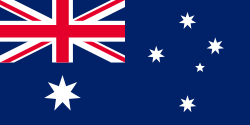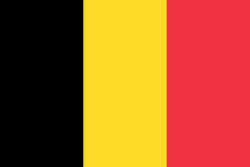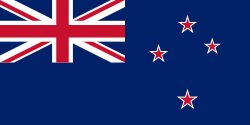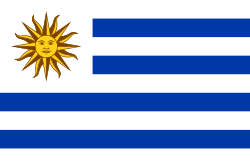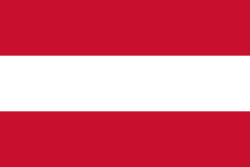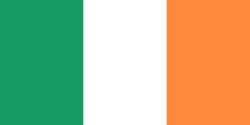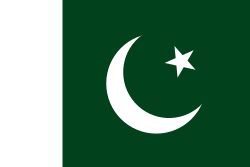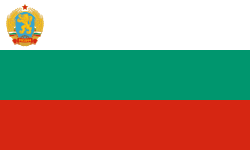Olympische Sommerspiele 1960/Radsport – Zeitfahren Bahn (Männer)
| Sportart | Radsport | ||||||||
| Disziplin | 1.000 m Zeitfahren (Bahnradsport) | ||||||||
| Geschlecht | Männer | ||||||||
| Teilnehmer | 25 Athleten aus 25 Ländern | ||||||||
| Wettkampfort | Velodromo Olimpico | ||||||||
| Wettkampfphase | 26. August 1960 | ||||||||
| Siegerzeit | 1:07,27 min | ||||||||
| |||||||||
| |||||||||
| Radsportwettbewerbe bei den Olympischen Spielen 1960 | |
| Straßenrennen | Männer |
| Mannschaftszeitfahren | Männer |
| Sprint | Männer |
| Zeitfahren | Männer |
| Tandem | Männer |
| Mannschaftsverfolgung | Männer |
Das 1000-m-Zeitfahren im Bahnradsport der Männer bei den Olympischen Sommerspielen 1960 in Rom wurde am 26. August im Velodromo Olimpico ausgetragen.
Ergebnisse
| Rang | Athlet | Nation | Zeit | Anm. |
|---|---|---|---|---|
| 1 | Sante Gaiardoni | 1:07,27 min | WR | |
| 2 | Dieter Gieseler | 1:08,75 min | ||
| 3 | Rostislaw Wargaschkin | 1:08,86 min | ||
| 4 | Piet van der Touw | 1:09,20 min | ||
| 5 | Ian Chapman | 1:09,55 min | ||
| 6 | Anésio Argenton | 1:09,96 min | ||
| 7 | Jean Govaerts | 1:10,23 min | ||
| 8 | Josef Helbling | 1:10,42 min | ||
| 9 | Les Haupt | 1:10,61 min | ||
| 10 | János Söre | 1:10,63 min | ||
| 11 | Warwick Dalton | 1:10,68 min | ||
| 12 | Ion Ioniță | 1:10,91 min | ||
| 13 | Allen Bell | 1:11,33 min | ||
| 14 | Luis Serra | 1:11,42 min | ||
| 15 | Mauricio Mata | 1:11,61 min | ||
| 16 | Michel Scob | 1:11,65 min | ||
| 17 | Karl Barton | 1:11,72 min | ||
| 18 | Bontscho Nowakow | 1:11,73 min | ||
| 19 | Tetsuo Ōsawa | 1:11,86 min | ||
| 20 | Günther Kriz | 1:12,58 min | ||
| 21 | Paul Nyman | 1:14,11 min | ||
| 22 | Diego Calero | 1:14,18 min | ||
| 23 | Clyde Rimple | 1:16,08 min | ||
| 24 | Michael Horgan | 1:17,18 min | ||
| 25 | Muhammad Ashiq | 1:20,17 min |
Weblink
- Ergebnisse in der Datenbank von Olympedia.org (englisch)
Auf dieser Seite verwendete Medien
Olympic Rings without "rims" (gaps between the rings), As used, eg. in the logos of the 2008 and 2016 Olympics. The colour scheme applied here was specified in 2023 guidelines.
Olympic Rings without "rims" (gaps between the rings), As used, eg. in the logos of the 2008 and 2016 Olympics. The colour scheme applied here was specified in 2023 guidelines.
Autor/Urheber: B1mbo, Lizenz: CC BY-SA 2.5
Zeichnung einer Goldmedaille, basierend auf Olympic rings.svg.
Flag of Italy from 1946 to 2003, when exact colors were specified.
Autor/Urheber: B1mbo, Lizenz: CC BY-SA 2.5
Zeichnung einer Silbermedaille, basierend auf Olympic rings.svg.
Die Olympiaflagge der gesamtdeutschen Mannschaft von 1960 und 1964, sowie beider deutschen Mannschaften 1968.
Autor/Urheber: B1mbo, Lizenz: CC BY-SA 2.5
Zeichnung einer Bronzemedaille, basierend auf Olympic rings.svg.
(c) I, Cmapm, CC BY-SA 3.0
The flag of the Soviet Union (1955-1991) using a darker shade of red.
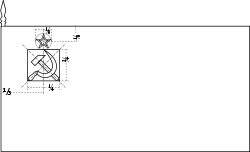
(c) I, Cmapm, CC BY-SA 3.0
The flag of the Soviet Union (1955-1991) using a darker shade of red.

Pictograms of Olympic sports - Cycling (road). This is unofficial sample picture. Images of official Olympic pictograms for 1948 Summer Olympics and all Summer Olympics since 1964 can be found in corresponding Official Reports.
Pictograms of Olympic sports - Cycling (track). This is unofficial sample picture. Images of official Olympic pictograms for 1948 Summer Olympics and all Summer Olympics since 1964 can be found in corresponding Official Reports.
Flag of Australia, when congruence with this colour chart is required (i.e. when a "less bright" version is needed).
See Flag of Australia.svg for main file information.Die quadratische Nationalfahne der Schweiz, in transparentem rechteckigem (2:3) Feld.
Flag of South Africa, used between 1928 and 1982. It is identical to the 1982 to 1994 version except that the shade of blue is darker. It is also known as the "Oranje-Blanje-Blou".
Flag of Mexico (1934-1968)
Flagge des Vereinigten Königreichs in der Proportion 3:5, ausschließlich an Land verwendet. Auf See beträgt das richtige Verhältnis 1:2.
Flagge des Vereinigten Königreichs in der Proportion 3:5, ausschließlich an Land verwendet. Auf See beträgt das richtige Verhältnis 1:2.
Variant version of a flag of Japan, used between January 27, 1870 and August 13, 1999 (aspect ratio 7:10).
Variant version of a flag of Japan, used between January 27, 1870 and August 13, 1999 (aspect ratio 7:10).
Flagge Österreichs mit dem Rot in den österreichischen Staatsfarben, das offiziell beim österreichischen Bundesheer in der Charakteristik „Pantone 032 C“ angeordnet war (seit Mai 2018 angeordnet in der Charakteristik „Pantone 186 C“).
Man sagt, dass der grüne Teil die Mehrheit der katholischen Einwohner des Landes repräsentiert, der orange Teil die Minderheit der protestantischen, und die weiße Mitte den Frieden und die Harmonie zwischen beiden.
The flag of Brazil from 1960 to 1968 with 22 stars.
Die Olympiaflagge der gesamtdeutschen Mannschaft von 1960 und 1964, sowie beider deutschen Mannschaften 1968.
Federal flag of the West Indies Federation, 3 January 1958 to 31 May 1962
Flag of Romania (24 September 1952 - 21 August 1965)

Construction sheet of the Flag of Romania as depicted in Decree nr. 972 from 5 November 1968.
- l = 2/3 × L
- C = 1/3 × L
- S = 2/5 × l
Autor/Urheber: Scroch, Lizenz: CC BY-SA 4.0
National Flag of the People's Republic of Bulgaria (1948-1968). Tha flag has got the coat-of-arms from 1948
Sport records icon to be used for world records.











